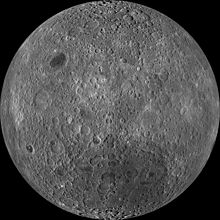China’s mission to explore
the Moon’s far side is all set to launch in part on Monday (Sunday in the US). As
the newspaper Guardian reports: The Chang’e 4 relay satellite will be stationed about
60,000km (almost 40,000 miles) behind the moon and provide a communications
link for the rover.
It is beautifully designed to land and eventually explore the lunar far side, which never faces Earth. The relay satellite has
been named Queqiao, meaning Magpie Bridge, a name that comes from Chinese
folklore in which a flock of magpies forms a bridge over the Milky Way to allow
a separated pair of lovers to unite.
The lovers, in this case,
are likely the satellite and the upcoming rover. China first announced its plan
to land on the Moon’s far side back in 2016. The feat would be a first for
humanity—but it’s going to take work.
It will be stationed at
Lagrange Point 2, a position beyond the orbit of the Moon where small objects
maintain the same position relative to us as they (and we) orbit the Sun.
The launch will also include
a few other, smaller satellites. On board Queqiao will be a radio-wave detector
to measure signals from stars in the early universe—more about those signals
here. It’s a proof-of-concept mission for a potential future space- or
moon-based radio antennae.
Chang’e 4 joins a line of
other successful Chinese lunar missions. Chang’e 1 and 2 orbited the Moon, and
Chang’e 3 was a lunar lander and rover on the Moon’s near side. The Chinese
National Space Administration plans to return a sample from the Moon with
Chang’e 5, slated to launch in 2019. It successfully performed a Chang’e 5 test
run in 2014.
If all goes according to
plan, China hopes to put humans on the Moon before the end of the 2030s.
Source


